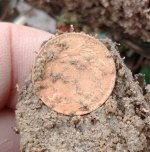JimBeHuntin'
Bronze Member
- Feb 1, 2007
- 1,154
- 4
- Detector(s) used
- Garrett AT PRO (As of 10/2011)
- Primary Interest:
- Metal Detecting
Here is a link to an interesting couple of articles on the atlatl: its history, theories on its use, why bannerstones, and modern day usage. Maybe you'll find them interesting:
http://www.primitive.org/atlstealth.htm
and another that I thought was intersting as well:
http://technology.newscientist.com/channel/tech/weapons/mg16221864.800
http://www.primitive.org/atlstealth.htm
and another that I thought was intersting as well:
http://technology.newscientist.com/channel/tech/weapons/mg16221864.800
Upvote
0






